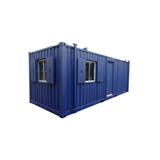In a submission to the federal government on the size of the immigration program to be set in the May budget, Ai Group chief executive, Innes Willox said: "This proposed increase takes into account the proven benefits to the economy of a strong migration program.
"An increase in migrant numbers supports positive growth in our population and especially in our adult workforce, which is important due to relatively low rates of natural population growth.
"A higher skilled migration intake is appropriate at present due to Australia's historically low (albeit growing) unemployment rates; the deepening impacts of our ageing workforce (with 9 per cent of all Australian employees now aged 60 or over and 17 per cent aged 55 or over); and persistent skill shortages in key growth industries including mining services, engineering, infrastructure and health services."
Willox continues: "With early indicators suggesting a positive upturn in national housing market activity, we expect the residential and commercial construction cycles will pick up significantly from 2014-15 which will in turn lead to further skilled trade shortages. This will be exacerbated by the flow of construction workers into the mining sector and reduced trades apprenticeship numbers in recent years.
"In particular, the flow of skilled workers into the mining industry from construction and industrial sectors will continue as mining moves from its current investment and expansion phase into a very strong period of growth in output and exports.
"These skills shortages and labour hire difficulties were seen clearly in recent Ai Group construction sector surveys. During the six months leading into September 2013, 67.7 per cent of respondents reported either major or moderate difficulty in the recruitment of skilled labour (up from 65.7 per cent six months ago). The sourcing of sub-contractors was also a dominant supply constraint with 47.1 per cent citing major or moderate difficulty (up from 43.8 per cent).
"The skill shortages situation is even more serious in relation to occupations requiring science, technology, engineering and mathematics (STEM) skills. The occupations where there are shortages due to low STEM levels, as illustrated by a recent Ai Group report: technicians and trade workers (41 per cent), professional (26.6 per cent) and managers (26.3 per cent). This is deeply concerning considering the office of the chief scientist recently reported that 75 per cent of the fastest growing occupations require STEM skills and knowledge.
"While up-skilling our current workforce remains a priority, a larger skilled migration program will be necessary to manage the current situation and to assist in smoothing the path to future growth across the economy," he said.












-160x160-state_article-rel-cat.png)








